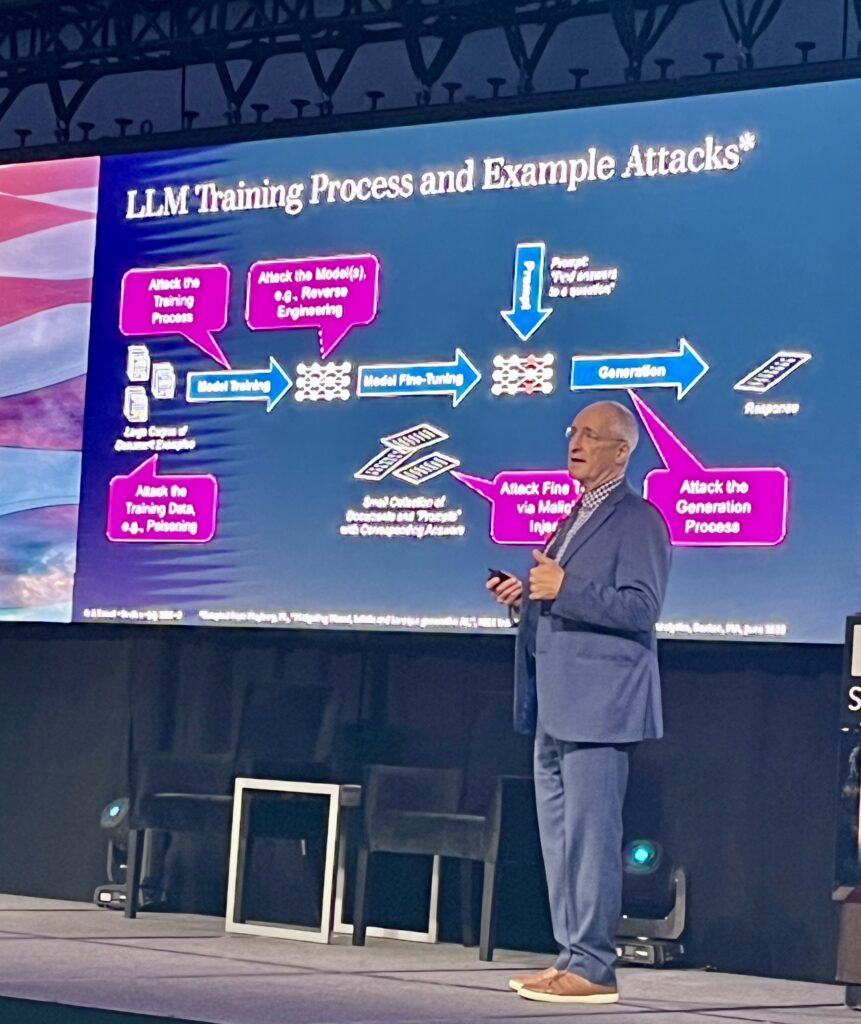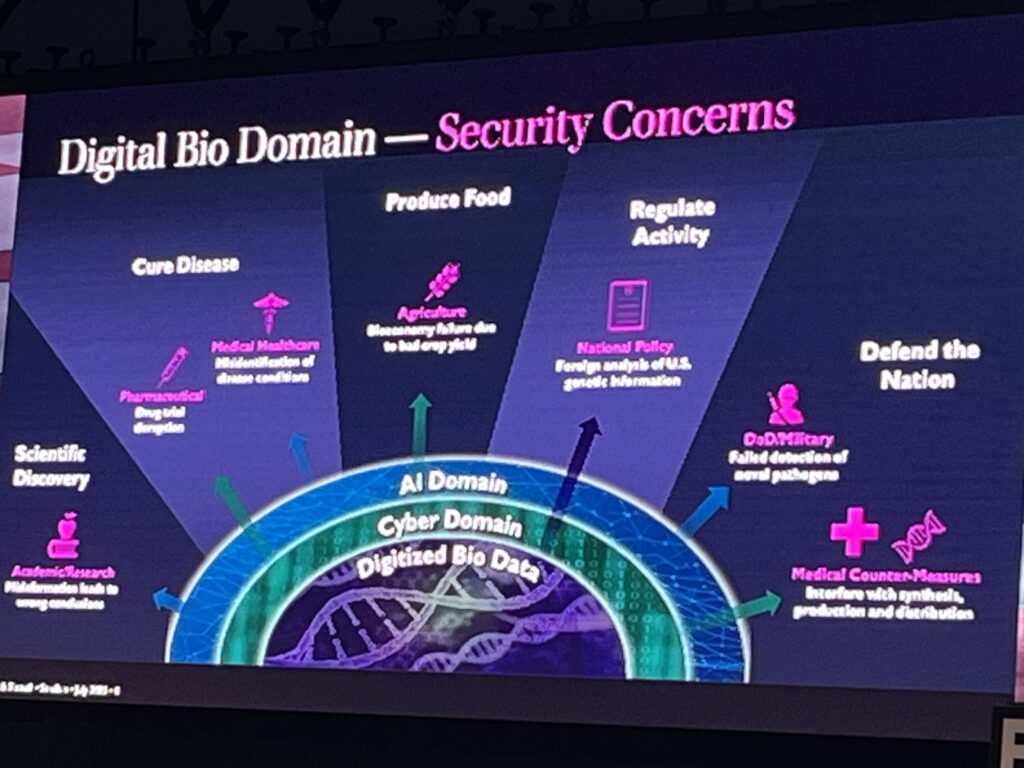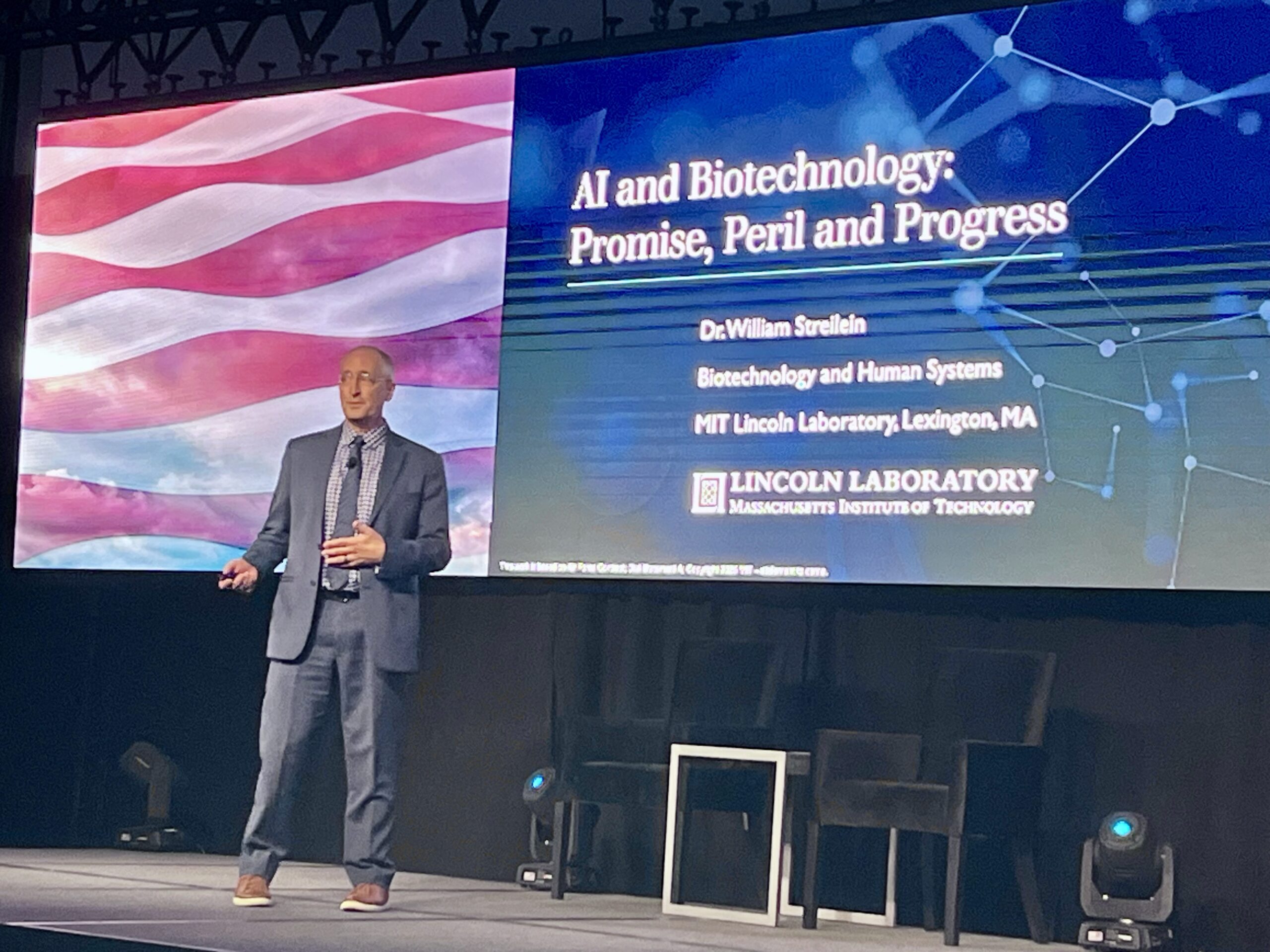By: Dawn Zoldi
The convergence of artificial intelligence (AI) and biotechnology has changed the face of science, medicine and national security. At the GBEF EDGE Security Summit 2025, Dr. William W. ‘Bill’ Streilein, Principal at MIT Lincoln Laboratory, explored this dynamic intersection.
New Discoveries Abound
The fusion of digitized biological data, advanced sensors and AI has driven an unprecedented pace of scientific achievement in biotechnology. Mapping the human genome, for example, has unlocked new understandings of disease and health. As a result, we stand at the precipice of truly personalized medicine, thanks to the wealth of biological data now available.
The digitization of biological systems has further enabled researchers to capture and analyze data at a scale never before possible. Sensors, once limited in their capabilities, now extract vast amounts of data from individual cells. This provides insights that fuel rapid advancements in drug discovery and disease diagnosis.
This data-rich environment, layered with cyber and AI domains, has accelerated knowledge discovery and changed the way scientists approach complex biological problems.
The Promise of AI in Biosciences
AI-driven systems can dramatically improve pathogen detection, accelerate the development of medical countermeasures and strengthen bio-surveillance networks. The ability to integrate data from genomics, climate science and global health networks enables predictive modeling for outbreak scenarios and facilitates cross-disciplinary collaboration.
Dr. Streilein pointed to recent advances in generative AI systems, which, using techniques like sequential diagnosis, have demonstrated the ability to outperform human doctors in certain diagnostic tasks. “Generative AI systems using what’s known as sequential diagnosis… are up to four times better at diagnosing the condition than a doctor is,” he shared, while acknowledging that such findings come with important caveats and require further validation.
Protecting the Warfighter
A significant focus of Dr. Streilein’s work is leveraging biosciences and AI to protect military personnel. Health monitoring systems can alert soldiers and commanders to fatigue or exposure to toxins, while AI-guided diagnostic and treatment tools can assist non-medical personnel in providing critical care on the battlefield. “An AI system could guide, for instance, sensor placement, acquisition of that data and even treatment,” he said, describing a Lincoln Laboratory program that uses AI to locate arteries for emergency intervention, a capability that could save lives in combat.
The military’s extensive health data, protected and private, represents a valuable resource for enhancing soldier resilience and performance. Distributed analysis across space and time enables early warning of biological threats to allow for rapid response and containment.
Accelerating Medical Countermeasures
One of the most promising applications of AI in biosciences is the rapid development of medical countermeasures. Dr. Streilein cited the example of CRISPR-based diagnostics, which use molecular “scissors” to detect the presence of pathogens or inflammation at the cellular level. These early warning systems, combined with AI-driven modeling of organelles and cells, enable researchers to test and develop new treatments more quickly and safely.
The integration of biotechnology and AI is also fostering new partnerships between the Department of Defense (DoD), industry and academia. Dr. Streilein stressed the importance of trusted collaboration, noting that “the role of trusted partners to make sure that the capabilities that are developed in industry, and in these innovation spaces, meet the needs of the DoD is absolutely critical.”
A Double-Sided Coin
While these advances offer immense promise, malicious actors can exploit the same tools that have lowered barriers for scientific progress. “Biodesign tools, once accessible only to experts, are becoming more user friendly, lowering barriers for malicious actors or state adversaries,” Streilein warned.
The rise of synthetic biology platforms, combined with generative AI, in particular raises serious concerns about the potential for automated pathogen creation and the deepening threat of biotech terrorism.

The digitization of bio data also introduces new vulnerabilities. If an adversary were to corrupt or manipulate this data, the consequences could be severe. Dr. Streilein painted a vivid picture: “Imagine how that would interfere with diagnosing what’s wrong with somebody. You may have drug trial disruption, which could delay the delivery of the capability to those who need it.” The integrity of agricultural systems, food supplies and even national defense could be compromised if nefarious actors tamper with the underlying biological data.
A Threefold Threat Surface
Dr. Streilein described a three-tiered model for understanding biosecurity threats:
Physical: At the foundational level are physical threats, such as the deliberate release of pathogens, that have long been the focus of biosecurity efforts.
Representational: The digitization of biological data introduces a representational domain, where threats to confidentiality, integrity and availability become paramount. “Once you digitize the data, that data is now in what we call the representational domain. And you can be anywhere to access it,” he explained.
Cognitive: Layered on top is the cognitive domain, where AI-driven systems influence not just data, but decision-making itself. Here, the risks multiply: data poisoning can mislead AI models, adversaries may evade detection systems or even extract proprietary information from trained models. “You’re not just dealing with bits now; you’re dealing with the way people think, how they make decisions,” Dr. Streilein emphasized.

Cybersecurity in the Age of Bio-AI
The integration of AI into bioscience systems has created new cyber-physical vulnerabilities. Laboratories and research centers increasingly rely on networked systems to manage experiments, store genetic data and outsource DNA synthesis to third parties. If these systems are compromised, through insider threats, counterfeit DNA components or manipulated data, the results can be catastrophic.
Dr. Streilein highlighted the risk of counterfeit DNA components. “If the DNA that comes back is counterfeit, you might not do what you want to do, and that could harm our capabilities,” he said. This threat is not limited to the laboratory. It extends to the broader bioeconomy, including agriculture, pharmaceuticals and public health.
National Security Implications
The intersection of AI and biosciences carries profound implications for national security. The global race to harness and secure biological data has begun.Dr. Streilein referenced a recent report from the National Security Commission on Emerging Biotechnology, which underscored the strategic importance of biotechnology and the need for robust protections. The report’s recommendations, call for prioritizing biotechnology and biomedicine, investing in innovation, mobilizing the private sector, developing a skilled biotech workforce and fostering international collaboration.
Streilein noted that “China has been announcing the fact that biotech is absolutely key to their future.” He continued, The pandemic started in China, but obviously it affected the whole world. The same thing is true. It’s infinite interest. It’s an increasingly connected world, not only physically, but also from a cyber perspective and to AI perspective as well,” he observed.
Building Resilience in Critical Supply Chains
The COVID-19 pandemic exposed vulnerabilities in both civilian and military supply chains, which highlight the need for novel approaches to biomanufacturing and supply chain resilience.
Dr. Streilein described efforts at Lincoln Laboratory to develop interoperable systems that can quickly adapt to new sources and withstand adversarial attacks. “We’re looking at ways to make systems interoperable so we can quickly switch out to new sources, make them resilient to, you know, impacts and adversarial attacks, as well as making sure that the product can survive,” he explained.
Nature itself offers a vast repository of solutions, a concept Dr. Streilein referred to as “bio prospecting.” By studying the diverse mechanisms evolved by organisms in extreme environments, scientists can discover new enzymes, proteins and metabolic pathways that can be harnessed for industrial and medical applications. With only 15 to 20 percent of microbial species currently understood, the potential for discovery remains immense.
Charting the Right Path Forward
The intersection of AI and biosciences is a domain of both immense promise and significant peril. The rapid pace of innovation offers hope for breakthroughs in medicine, agriculture and national defense. At the same time, it demands vigilance against new and evolving threats. The future of biosciences and AI will be shaped by the choices about investment, collaboration, security and ethical stewardship made today.

